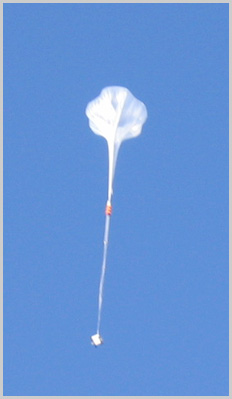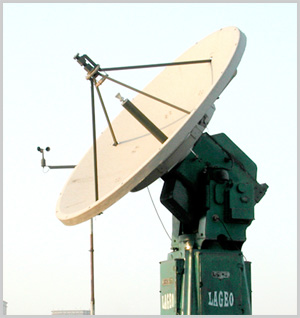Website:http://lageo.iap.ac.cn/
Brief Introduction
LAGEO focuses on the cutting-edge of basic research and high-tech research. It has made progress in the middle level atmosphere remote sensing field, such as succeeding in developing a GPS ozone sounding system and passing technology qualifications. Its technology is continually maturing as it is used in service. LAGEO has developed a surveying stratospheric large-scale wind profiling VHF/ST radar and a four-way ozone aerosol survey laser radar that have passed qualification, and a constant-altitude, 1000-m3 balloon-platform stratospheric observation system, among others. Further developments and acquisition of instruments and equipment include: a dual-wavelength, dual-polarization rain radar, a whole-sky imaging system, a car-mounted single-wavelength flow laser radar, and a new-type tethersonde. The laboratory has acquired a Cimel fully-automatic sun photometer (jointly with Aeronet), and various analysis instruments, such as a dual-frequency GPS receiver, and CO and O3 analyzers, etc. Two Dobson instruments in Beijing and Kunming have joined the world stage. LAGEO’s international cooperations constantly expand in range, such as the cooperation with the Department of Meteorology of the University of Maryland to plan an aerosol/cloud/radiation study and set up an aerosol observation network in China; and that with France’s Lille University of Science and Technology, Atmosphere Optics Laboratory, in maintaining the Beijing Aeronet platform. Over the past four years, LAGEO’s entire study group has grown steadily in size in general, in numbers of doctors, in using talent from abroad, and in raising the quality of the scientific research team.
Main Research Fields
- The dynamical, photochemical and radiative processes in the middle atmosphere, and their effects on weather and climate
- Atmospheric radiation, atmospheric and environmental remote sensing
- Advanced atmospheric and environmental monitoring technologiesResearch Areas
- The detection and model study of the physical and chemical processes in the middle atmosphere
- Atmospheric ozone
- The interaction between middle atmosphere and lower (or upper) atmosphere, and the relationship between the Sun and the Earth systems
- The response of the middle atmosphere to human activities, and atmospheric non-linear processes
- Atmospheric radiative models and their applications
- The measurement of cloud and aerosol characteristics and their effect on climate
- The space-based and ground-based atmospheric and environmental remote sensing, and data assimilation
- Advanced technologies for atmospheric detection and environmental monitoring
 |

The dual-wavelength and dual-polarization Doppler radar on the top of the main
building of IAP |
| The stratospheric balloon in ascending | |
